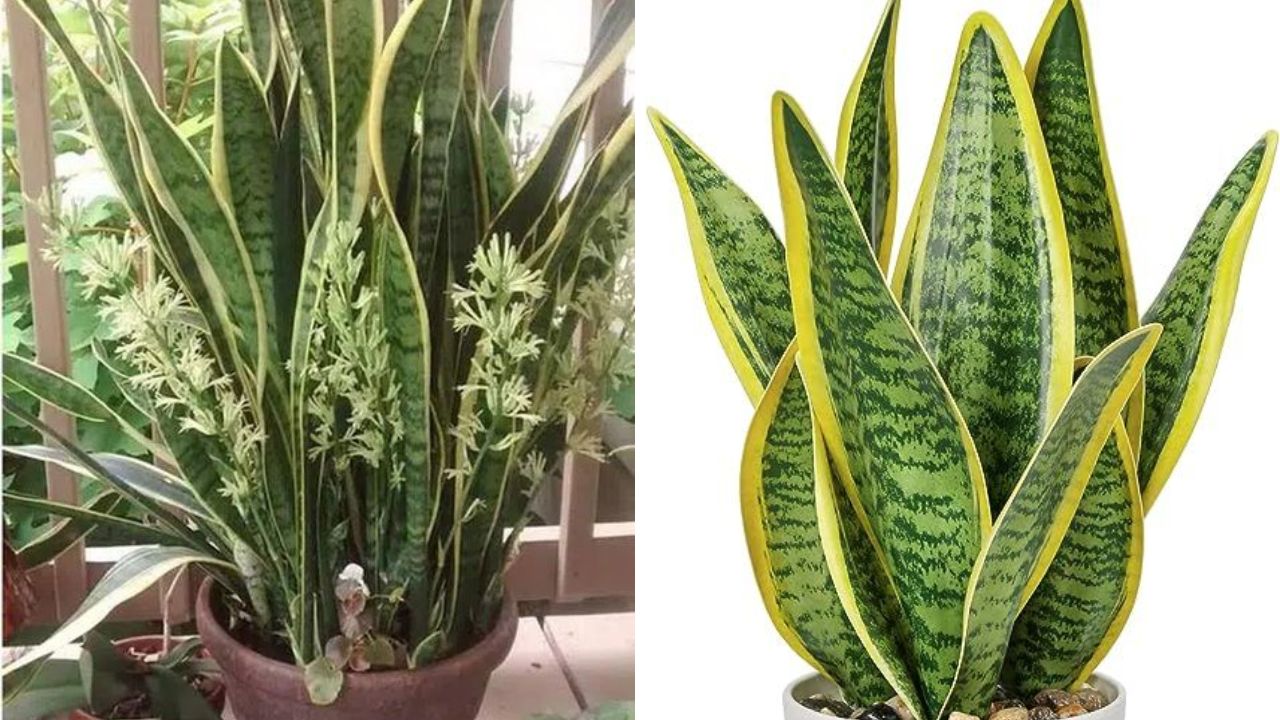One of the most well-liked shrubs for flowering landscapes is the viburnum. You may choose a viburnum cultivar to fit any type of garden thanks to the nearly limitless variety that are available. The majority of viburnum shrubs flower from early spring to June, and then produce visually appealing fruit and spectacular fall leaves. Viburnums grow quickly and can be grown as tiny trees or shrubs.
Viburnum foliage comes in a variety of varieties. It might be smooth, velvety, rough, spherical, lance-shaped, or serrated. Along with a large number of deciduous types that have exceptional fall color, there are also several evergreen viburnum varieties. There are three main varieties of the blooms: snowball-shaped, dome-shaped clusters, and flat umbels bordered with larger flowers that resemble lace-cap hydrangeas.
Table of Contents
ToggleViburnum Overview

| Common Name | Viburnum, American cranberry bush, hobblebush |
| Botanical Name | Viburnum spp. |
| Family | Adoxaceae |
| Plant Type | Shrub |
| Mature Size | 3-20 ft. tall, 3-12 ft. wide |
| Sun Exposure | Full, partial |
| Soil Type | Moist, well-drained |
| Soil pH | Neutral, acidic |
| Boom Time | Spring |
| Flower Color | White, pink |
| Hardiness Zone | 2-9 (USDA) |
| Native Area | North America |
Viburnum Care

Viburnums generally don’t care where they grow, however they do like reasonably rich, moist soil. The best course of action is to plant well-established container-grown plants and be sure to select a place that will allow the shrub enough room to grow, as viburnums do not transplant well once established. The optimal time to transplant is in the early spring, when they have a whole season to acclimate.
Planting
Dig a hole twice as wide as the container and as deep as the viburnum to plant. Carefully take the plant out of its container and set it down in the middle of the opening. After partially backfilling the hole, add water, and finish filling it.
To assist the soil retain moisture after planting, cover the soil with a 2-inch layer of mulch. Watering the shrubs every 7 to 10 days is recommended during hot weather. Although certain species can be coaxed to grow like trees by cutting out rival stems, very little pruning is required.
Light Requirements
Viburnums may take little shade, but they prefer full sun. In fact, in the hottest portions of the plant’s hardiness range, some afternoon shade is preferable.
Soil and Potting

These shrubs dislike having their roots submerged in water, but they do tolerate somewhat damp, well-drained soil. Although many varieties may survive in alkaline soil, viburnums prefer slightly acidic soil.
Watering
Generally, one deep watering per week—by irrigation or rainfall—is adequate. Well-established native types may withstand droughts rather well.
Temperature and Environment
Though the preferences of viburnums vary widely depending on the species, they generally enjoy mild circumstances. Overly hot weather need more frequent watering, while extremely low temperatures may harm or even kill plants.
Fertilization
The majority of viburnums only require a single springtime treatment of a balanced, time-release fertilizer. As for the quantity, adhere to the directions on the product label. Most shrubs thrive without fertilization after they are established.
Types of Viburnum
This broad category of plants includes evergreen shrubs and small trees, as well as deciduous and semi-evergreen (which may lose their leaves briefly in the winter months). Depending on the region in which they are grown, several varieties can be either deciduous or evergreen.
Deciduous Viburnum Varieties
‘Swamp-haw viburnum’ (Viburnum nudum): This plant can reach a mature height of approximately 12 feet with a 6-foot spread when it thrives in zones 5 to 9. It would rather be in full sun than little shade. This type yields clusters of spherical drupes after producing white blossoms in late June.
‘Hobblebush’ (Viburnum lantanoides): This variety, formerly known as Viburnum alnifolium, is hardy in zones 4 through 7 of the USDA. With a spread of twelve feet, it reaches a maximum height of approximately eight feet. It grows somewhat erratically and is native to northeastern to mid-Atlantic North America. It is probably best suited for a naturalized environment. May brings flat umbels of white flowers and scarlet clusters of fruit that ripen to a classic blue-black color.
‘Nannyberry’ (Viburnum lentago): This species reaches a mature height of approximately 12 feet with a 10-foot spread in USDA hardiness zones 2 through 8. Although it can withstand hot temperatures and dry soil, it likes damp shade. Mid- to late-May sees the appearance of creamy white lace-cap blooms.
Korean spice viburnum (Viburnum carlesii): This well-known shrub that blooms in the spring has fragrant pink buds that open into clusters of white flowers with hints of pink. Before dropping, fall leaves transition from crimson to purple, and occasionally orange.
Evergreen Viburnum Varieties
David viburnum (Viburnum davidii): This plant, which has distinctive leathery dark blue-green leaves, is thought to be a low, compact shrub. In April, creamy white flowers emerge from pink flower buds. It can be a deciduous plant in the north, which means that in colder regions, it becomes semi-evergreen.
‘Spring Bouquet’ (Viburnum tinus): This well-liked variety reaches heights of 3 to 5 feet. In late winter and early spring, it produces thick clusters of delicately scented white flowers on reddish stems, which later mature into metallic blue-black fruit.
‘Emerald Lustre’ (Viburnum odoratissimum): The cultivar, sometimes called sweet viburnum, rises to a height of 10 to 20 feet in an erect manner. Its huge, glossy green leaves are tinted pink, and it blooms white in the middle of April. As the plant ages, the crimson fruits turn purple-black in color.
Walter’s viburnum (Viburnum abovatum): This natural evergreen grows to a height of 20 feet, and USDA zones 7–10 are the ideal growing conditions for it. It blooms white flowers in the spring.
Pruning

To keep the shape of the shrub, cut back any lanky shoots in the early summer. Prune viburnum only after the bloom period since it blooms on old wood. As soon as you see dead, diseased, or broken branches, you should remove them. To get the right shape, this plant’s tree forms may need to be pruned.
Propagating
Viburnum can be propagated using either hardwood or softwood cuttings.
- Select a healthy branch that is 4 to 6 inches long for softwood cuttings. If at all possible, take the cutting early in the day. Take out the lower third’s leaves. To obtain hardwood cuttings, select a robust stem and trim 8 to 10 inches off of it, removing the leaves from the lower half and ensuring that there are a few nodes present.
- Make a little hole in the middle of the damp peat and perlite mixture that you have filled small pots with.
- Put some rooting hormone on the stem. In the pot, place the cutting.
- For a softwood cutting, this will take around four weeks. Cover the cutting with a plastic bag or dome and maintain it in indirect sun with moist soil until the roots start to form. For a hardwood cutting, rooting may take longer, but it should still happen after a few months.
- To check if a plant has roots, gently tug on it. If resistance exists, the plant is starting to put down roots. Take off the plastic and set it somewhere with good indirect lighting. Acclimate your plant to the outdoors gradually before planting it in the landscape by keeping it in a covered place for a few hours each day for a week or ten days.
How to Grow Viburnum From Seed
It is possible to grow viburnum from seed, but it takes a lot of work. Instead, most experts advise propagating from cuttings.
Potting and Repotting Viburnum
When selecting a cultivar for potted planting, take care to consider its needs. While certain viburnum species require the larger space that an outdoor planting offers, some are better suited to smaller spaces. Large pots with drainage holes are ideal for planting viburnum; the pot should be at least 8 inches wider than the root ball. This plant requires full light and soil that drains properly. Add 10 to 20 percent perlite to the mixture to prevent damp soil.
Overwintering
Although viburnum is hardy, in colder climates it may lose its leaves. Remove any dead branches and leaves. By springtime, your bush will grow back.
Common Pests
One of the reasons viburnums are so well-liked in landscape design is that not many pests affect them. On the other hand, the viburnum leaf beetle (VLB) entered Canada in 1947 and eventually reached the state of New York in 1996. Pyrrhalta viburni, often known as Paykull, is a very dangerous virus that is being actively monitored. Predatory insects should be encouraged and leaves contaminated with eggs should be removed as the greatest defense against viburnum leaf beetles. While synthetic pesticides also harm beneficial insects, certain organic insecticides are equally effective.
How to Get Viburnum to Bloom
If your viburnum isn’t flowering, check its location. While it may tolerate some shade, plants kept in direct sunlight will produce blooms more frequently. Considering that viburnum requires well-drained soil, watering could also be a problem. Recall that an excess of nitrogen can promote luxuriant foliage but inhibit a bloom’s explosive growth. Don’t cut the plant during dormancy as this will remove the bloom-producing buds because the plant blooms on old wood.
Common Problems
Fortunately, gardeners don’t have to deal with many problems when growing viburnum. To protect your plant’s health, however, take quick action if you see any of the following signs.
Black Spots or White Growth on Leaves
Fungal diseases like powdery mildew, downy mildew, or fungal leaf spots are frequently the cause of this. Avoid watering the plants from above, treat afflicted plants with a fungicide, and remove any damaged plant parts in order to stop this.
Stunted or Yellow Leaves
A white fungal growth under the bark and at the summit of the tree or shrub may indicate that Armillaria root rot is the cause of this. Digging out and discarding the viburnum is the only course of action if this issue has crept into the trunk.
Dead, Wilted, and Discolored Leaves
Viburnum may be afflicted by canker, a fungal infection. This frequently happens with trees that are already stressed. The most effective treatment is to restore the plant’s health, as it is likely to be able to combat this issue on its own.





